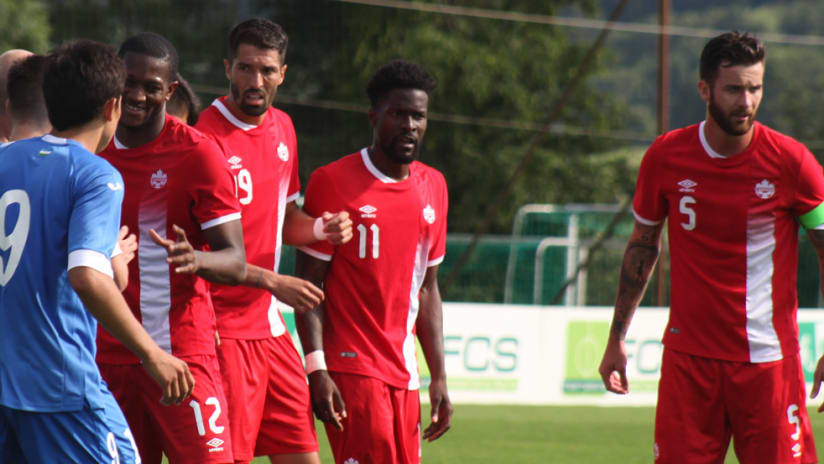It’s time for the Canadian men’s national team to evolve.
That’s the word from Michael Findlay, who’ll serve as Canada’s interim head coach for its upcoming friendlies against Mauritania on Oct. 7 and Morocco on Oct. 11. Findlay was as an assistant under Benito Floro, who parted ways with Canada after its 2018 World Cup qualifying campaign ended in mid-September.
One of Findlay’s main priorities in his role will be to evaluate the player pool and help set the table for the next full-time manager, whoever it may be. To that end, Canada’s 23-man roster for the upcoming friendlies features a mix of veterans, newcomers and players who didn’t feature during the qualifying run.
“We definitely wanted to blend the group,” Findlay told media on a conference call Friday. “We want to get a really good idea of exactly where we stand in terms of our long list of players.”
Toronto FC’s Jonathan Osorio is back after a year-long absence, while Vancouver’s Fraser Aird and Marco Bustos and TFC’s Jordan Hamilton are all seeking their second caps for the senior team. Montreal’s Anthony Jackson-Hamel earned his first call-up to the senior national team.
Meanwhile, Scott Arfield and Junior Hoilett are both on the squad, an encouraging sign of their commitment to the program. Off the team, however, is Atiba Hutchinson, whose national team future remains in question.
“He wanted to take some time [to decide his future],” said Findlay. “We, of course, would honor that request. We’re in constant contact with Atiba.”
Findlay had his eyes on a half-dozen other players for this camp, all of whom were ruled out due to injury: Sam Adekugbe, Ben McKendry and Russell Teibert of the Vancouver Whitecaps, Jay Chapman and Will Johnson of Toronto FC and Michael Petrasso of Queens Park Rangers.
Cyle Larin, meanwhile, chose to remain with Orlando City as they chase a playoff position in the Eastern Conference, a decision that Findlay says he respects.
But they’ll all have opportunities to stake their claims in the future, as Findlay reiterated a priority previously mentioned by CSA president Victor Montagliani—the team is hoping to play in every upcoming FIFA international window.
“We cannot afford to go dormant,” said Findlay. “We need to get on the front foot, and this is where we’re going to go over this next period of time.
“My priorities lay firmly in that transitional period and providing the best possible information to make the best possible decisions moving forward.”
Even if Findlay’s big-picture role is to serve as a bridge to the next manager, there is the matter of what kind of approach he’ll bring to Canada’s next two (or more) games. He showed a sense of humor when asked about whether he would amend the defensive philosophy that Floro brought to the team.
“Yeah, I’m only going to play one at the back and we’re just going to go for it,” he said.
Though that one-defender formation won’t come to fruition, Findlay is hoping for the team to gradually adopt “a much more vibrant and attacking mind set”.
“There’s no secret that one of our challenges in the past is that we didn’t score enough goals,” he said. “We need to hopefully unearth players that are able to do that.”
But Findlay won’t throw out the baby with the bathwater when it comes to defensive structure—rather, he wants the team to continue building upon it.
“We have established a core understanding of what we need to do behind the ball,” said Findlay. “Now we build the next layer onto it. That’s a general, natural transition now with the type of group we have and where we’re going.”
It remains to be seen who’ll guide that transition in the long run, as the CSA’s search for a full-time manager is ongoing. Findlay, however, seemed to indicate that he’d jump at the chance if it was offered to him.
“I don’t think there’s a Canadian out there who coaches who wouldn’t want to be the national team coach,” he said. “Right now my job is in an interim position … my first priority is to fulfill that.”
Though Findlay lacks coaching experience at the senior level, he does have a solid background in the youth game (having been part of Canada’s Under-17 and Under-20 programs), which he feels will help him integrate new and young players into the senior team setup.
“I’m looking to create the most positive and vibrant training, playing and educational environment possible,” he said. “I just want to be able to provide players with the best possible opportunity to be better.”













